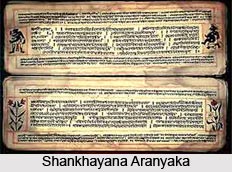 The first two chapters deal with the Mahavrata. The next three chapters comprises of the Kaushitaki Upanishad. Thereafter the seventh and eighth chapters are referred to as Samhitopanishad. Chapter 9 speaks of the merits of Prana. Chapter 10 enumerates mysterious implications of the ritual of Agnihotra ritual.
The first two chapters deal with the Mahavrata. The next three chapters comprises of the Kaushitaki Upanishad. Thereafter the seventh and eighth chapters are referred to as Samhitopanishad. Chapter 9 speaks of the merits of Prana. Chapter 10 enumerates mysterious implications of the ritual of Agnihotra ritual.
Divine beings are inherent in the Purusha. Chapter 11 provides several solutions in the ritual form for warding off death and sickness. It also speaks about the effects of dreams.
Chapter 12 speaks about the merits of prayer. Chapter 13 deals with philosophical matters. Chapter 14 elaborates on two mantras only. "I am Brahman" mantra is considered as the summit of all Vedic mantras. The second mantra says that one who does not know the meaning of mantras and recite it for the sake of it would never realize its value. Chapter 15 provides a lineage of spiritual teachers starting from Brahma to Gun
a-Sankhayana.
This article is a stub. You can enrich by adding more information to it. Send your Write Up to content@indianetzone.com



















